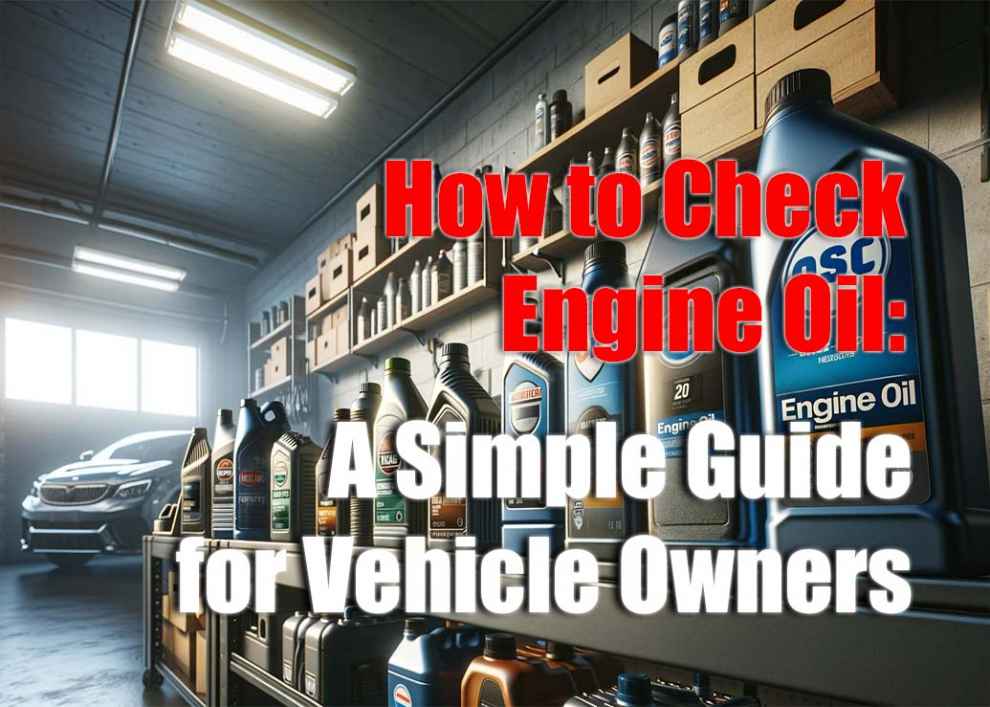The health of your vehicle’s engine is paramount to its overall performance and longevity. Among the myriad of maintenance routines, checking the engine oil stands out as a critical task. This seemingly simple process plays a significant role in the engine’s operation, ensuring that all moving parts are adequately lubricated, reducing friction, and helping to manage the engine’s temperature. A proper understanding and execution of how to check engine oil can save car owners from the inconvenience and expense of major engine repairs. It’s a preventive measure that maintains engine health and, by extension, ensures the vehicle’s reliability and efficiency.
Why Checking Engine Oil Is Crucial
Engine oil is the lifeblood of your vehicle’s engine, facilitating smooth operation and protecting against premature wear. It acts as a lubricant for the engine’s internal components, minimizes friction, absorbs heat, and helps prevent overheating. Over time, engine oil breaks down and loses its efficacy, contaminated by particles and combustion byproducts. Regularly checking the engine oil level and condition becomes essential to ensure the engine is protected and running efficiently. Neglecting this vital maintenance task can lead to significant engine problems, including increased fuel consumption, overheating, and even total engine failure, leading to costly repairs or replacements.
Step-by-Step Guide on How to Check Engine Oil
To maintain your engine’s health and performance, follow these steps to check your engine oil:
- Ensure the vehicle is parked on level ground to get an accurate oil level reading.
- Wait until the engine is cool, especially if the vehicle has been in use, to prevent burns and ensure the oil has settled.
- Locate the engine’s oil dipstick, usually marked by a yellow or orange handle.
- Pull the dipstick out, wipe it clean with a rag, then reinsert it completely.
- Remove the dipstick again to check the oil level. The oil should be between the “min” and “max” marks on the dipstick. This indicates that your engine has an adequate amount of oil.
Checking your engine oil monthly and before any long trip is advisable to catch any issues early and keep your engine running smoothly.
Understanding Your Oil Level Results

Tips for Maintaining Optimal Engine Health
Maintaining your engine in top condition requires more than just regular oil checks. Here are additional tips to ensure your engine’s longevity:
-
Adhere to a regular oil and filter change schedule as recommended by your vehicle’s manufacturer.
-
Choose high-quality oil suited to your vehicle’s specific needs. For Jeep enthusiasts, selecting the best oil for Jeep is crucial for enhancing performance and durability.
-
Keep an eye out for signs of oil leaks under your vehicle and address them promptly.
-
Be attentive to changes in engine noise or performance, which could indicate oil-related issues.
Conclusion
Understanding how to check engine oil is more than just a routine maintenance task; it’s an essential practice for ensuring the longevity and reliability of your vehicle’s engine. This simple yet critical inspection allows you to prevent potential issues from escalating into costly repairs. Maintaining the correct oil level and quality not only protects your engine from wear but also optimizes its performance and fuel efficiency. Regular checks act as a foundational aspect of engine care, providing peace of mind and uninterrupted journeys.
For vehicle owners, the commitment extends beyond just performing maintenance checks; it involves selecting high-quality products tailored to their vehicle’s specific needs. Through consistent maintenance and informed product selection, your vehicle can continue to be a dependable and high-performing companion on all your adventures, embodying the principles of thorough automotive care and stewardship.

Add Comment